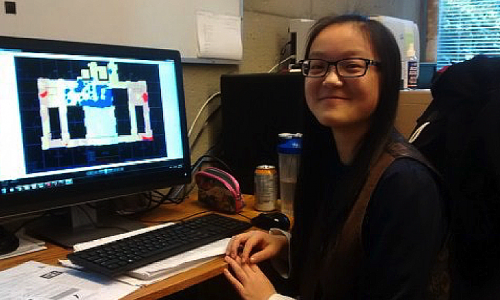
If you’re about to start a new job, you probably have a lot on your mind already. Indeed, over the course of your first few days you will be asking a lot of questions. But there is one issue you should ask about before anything else: safety.
Each year, many young workers are hurt on the job in preventable accidents. Injury rates are much higher among workers in their first six months on the job, so as a new employee it is especially important to keep safety at the forefront of your mind.
All Canadian provinces and territories have enacted occupational health and safety regulations designed to protect workers and prevent injuries. In British Columbia, these regulations are overseen by WorkSafe BC, a division of the Ministry of Labour and Citizens Services.
This guide has been created to help you familiarize yourself with the most basic of these regulations.You will also find useful information on staying healthy and working safely in an office environment.
Your Rights and Responsibilities
When you start a new job, you should receive health and safety training as part of your orientation. During this training you should be given instruction on fire and emergency procedures, the location of first aid equipment, the proper use of any specialized tools or equipment, and information on potential hazards that are unique to your workplace.
At this stage, your primary responsibility is to listen and ask questions. You should ensure that you have a complete understanding of all health and safety policies before you start work. If you have any reservations about your duties, now is the best time to voice them. You should also ask if your workplace has a Joint Occupational Health & Safety Committee or Safety Representative.
As you settle into your new position, you will likely encounter new situations and be assigned new duties. You should be aware that you have the right to refuse any task if you have reason to believe it will endanger yourself or others. You cannot be disciplined for refusing any work that you believe is unsafe.
Your employer must ensure that basic health and safety regulations are met, however you have the responsibility to keep safety at the forefront of your mind at all times. If you are injured, or if you witness an injury, you also have the responsibility to immediately report the incident to your employer. You should seek medical attention as soon as possible, and be sure to tell your physician that your injury is work-related.
Workplace Hazards by the Numbers
According to WorkSafe BC, there are 7 major tasks that cause the most injuries among younger workers in British Columbia:
7. Working in proximity to running equipment or machines
6. Working with food slicers
5. Using mobile equipment or motor vehicles
4. Working with hot substances or objects
3. Working with knives
2. Working on elevated levels
1. Lifting objects
Most accidents involving younger workers occur in restaurants, supermarkets, and general retail establishments.
Workplace Safety in the Office
Many Co-op students and recent graduates will find themselves working in some type of office environment. Although an office may not seem as hazardous as a farm or factory, office workers are actually at risk for a variety of serious injuries.
Most office workers spend their days seated at a desk, usually in front of a computer workstation. Unfortunately the human body is not designed to remain in the same position for prolonged periods, or to perform the same tasks over and over. When you combine these basic limitations of human physiology with the fact that many people do not maintain correct posture, configure their workstations appropriately, or take regular breaks, it becomes easy to see how problems can develop.
The most common types of injury experienced by workers in the office environment are musculoskeletal injuries, or MSI. MSI are injuries of the soft tissues (muscles, joints, tendons, ligaments, cartilage) and nervous system. The most common examples include repetitive strain injuries such as tendonitis and carpal tunnel syndrome, and back injuries involving muscles, ligaments, and/or spinal discs.
According to Dan Robinson, Adjust Professor of Kinesiology at SFU, part of the problem is that people are only now starting to realize the dangers of working in an office in an environment.
“The contemporary computing office can be as hazardous as a lot of heavier labour,” said Robinson, who is also a Certified Professional Ergonomist. “You certainly don’t see as many fatalities, but in terms of musculoskeletal injuries or other types of ongoing debilitating conditions, the office can be very hazardous.”
“Most injuries in the office environment are of the repetitive strain variety,” Robinson said. “You’re talking about low back pain, hand/wrist tendonitis, shoulder tendonitis. And for the most part these are the types of things that don’t develop because of any one thing you’re doing wrong, they develop because of a number of factors stretched out over the course of years.”
Early diagnosis and treatment of MSI can save you a lot of pain and suffering in the long term. According to Robinson, unusual aches and pains, muscle tension, headaches, numbness, and tingling sensations are all warning signs that you may be developing an injury. Discomfort that interferes with sleep or other night-time activities is also a common warning sign.
Of course it is always best to prevent injuries before they begin to develop. According to Robinson, the first step is to analyze your own behaviors at work.
“The primary factor is probably posture. People maintain awkward, static postures for long periods. Over the course of the day people begin to slouch, the head slopes forward, and this can put a great deal of stress on joints and tissues,” Robinson noted. “Your head is about the same size and the same weight as a four liter jug of milk, so a forward-sloping posture that places the head out in front of your body puts a great deal of stress on the neck.”
“Other factors include what I term ‘hidden forces,’ such as gripping the mouse too firmly, or punching the keys on your keyboard with a great deal more force than is necessary,” Robinson added. “And finally there is the issue of repetition – doing the same things over and over.”
Robinson also notes that many people do not take the time to appropriately configure their work station when they start a new job. “Most people have access to the equipment they need to properly configure their workspace, it’s typically an issue of knowing how to do it correctly, and taking the time to actually do it.”
“What you’re trying to do is set up the physical environment in a way that allows all of the joints in your body operate in their optimal position,” Robinson said. “For seated work, this usually takes the form of the 90-90-90 rule, meaning that the knees, the hips, and elbows are all at 90 degrees. And for most of the other joints, it simply a matter of keeping them at as straight as possible.”
“The other key thing is to move up your computer’s monitor. You want to get the monitor at a height where the top line of text is at eye level,” Robinson added. “What I’ve found is that if you’re in a solid seated position and you can get the head up, it has a big impact on shoulder poster, neck posture, and arm position.”
WorkSafe BC publishes a complete guide on how to properly set up a computing workstation. You can view the guide here.
Robinson also recommends taking regular breaks throughout the day to stretch and change position. He also suggests drinking plenty of fluids to keep tissues and joints properly lubricated.
WorkSafe BC provides a “stretch reminder utility,” which you can download for free here. The program will display a basic stretching exercise for you to do each hour.
Disclaimer: “This article has been provided for informational purposes only and is not intended to be a substitute for qualified medical advice. If you are experiencing unusual symptoms or changes in your body, you are advised to consult a physician.”













